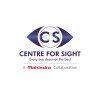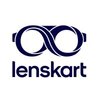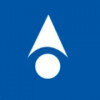Consultant Optometrist
10+ Consultant Optometrist Interview Questions and Answers

Asked in Centre For Sight

Q. What is the use of a Jackson cross cylinder?
The Jackson cross cylinder is a lens used in optometry to refine the prescription and determine the astigmatism axis.
It is used to subjectively measure the amount and axis of astigmatism in a patient's eye.
The lens consists of two cylindrical lenses with opposite axes that can be rotated to neutralize astigmatism.
By comparing the patient's visual acuity with and without the cross cylinder, the optometrist can determine the optimal prescription.
The Jackson cross cylinder is co...read more

Asked in Centre For Sight

Q. What is the use of the Duochrome test?
The Duchrome test is used to assess color vision deficiencies, specifically red-green color blindness.
The Duchrome test involves the use of special plates with colored dots or numbers.
The test helps identify individuals with red-green color blindness.
It can also differentiate between different types of color vision deficiencies.
The results of the test can aid in diagnosing and managing certain eye conditions.
Examples of other color vision tests include the Ishihara test and F...read more

Asked in FrameCrafters

Q. How much time do you take for an eye exam?
The time taken for an eye check can vary depending on the individual and the specific tests required.
The duration of an eye check can range from 15 minutes to an hour or more.
It depends on the complexity of the case and the tests needed.
A routine eye check may take around 20-30 minutes.
If additional tests like dilating the pupils or measuring eye pressure are required, it may take longer.
Some specialized eye exams, such as for contact lens fitting or evaluating eye diseases, ...read more

Asked in L. V. Prasad Eye Institute

Q. My interviewer asked me to perform retinoscopy on a given subject.
Retinoscopy is a technique to assess refractive error by observing the reflection of light from the retina.
Ensure the room is dimly lit to enhance pupil dilation.
Use a retinoscope to shine a light into the patient's eye.
Observe the movement of the light reflex on the retina.
Determine the type of movement: 'with' or 'against' the light.
Use lenses to neutralize the reflex and find the patient's refractive error.
Record findings for further analysis and prescription.

Asked in FrameCrafters

Q. How many types of progressive lenses are there?
There are various types of progressive lenses available in the market.
There are basic, premium, and customized progressive lenses.
Basic lenses have a limited reading area and are suitable for low prescriptions.
Premium lenses have a wider reading area and are suitable for higher prescriptions.
Customized lenses are tailored to the individual's specific needs and preferences.
Some examples of progressive lens brands are Varilux, Zeiss, and Hoya.

Asked in FrameCrafters

Q. How many types of contact lens materials are there?
There are four types of contact lens materials: soft, rigid gas permeable, hybrid, and scleral.
Soft lenses are made of hydrogel or silicone hydrogel and are the most commonly used type.
Rigid gas permeable lenses are made of a hard plastic material that allows oxygen to pass through.
Hybrid lenses have a rigid center and a soft outer ring for comfort.
Scleral lenses are large, gas permeable lenses that rest on the sclera (white part of the eye) and are used for irregular corneas...read more

Asked in L. V. Prasad Eye Institute

Q. What is a refractive error?
A refractive error is a vision problem that occurs when the shape of the eye prevents light from focusing directly on the retina.
Refractive errors include myopia (nearsightedness), hyperopia (farsightedness), astigmatism, and presbyopia.
They can be corrected with eyeglasses, contact lenses, or refractive surgery.
Myopia is when distant objects appear blurry, hyperopia is when close objects are blurry, astigmatism causes distorted vision, and presbyopia is age-related difficult...read more

Asked in FrameCrafters

Q. How do you perform an eye checkup?
Eye checkup involves a series of tests to evaluate the health and function of the eyes.
Visual acuity test to measure sharpness of vision
Refraction test to determine the need for glasses or contact lenses
Eye muscle test to check for alignment and movement
Slit-lamp exam to examine the structures of the eye
Tonometry to measure eye pressure for glaucoma screening
Dilation of pupils to examine the retina and optic nerve
Color vision test to detect color blindness
Visual field test to...read more
Share interview questions and help millions of jobseekers 🌟


Asked in Klm Axiva Finvest

Q. How do you handle customers?
Handling customers requires good communication skills and empathy.
Listen actively to their concerns and needs
Be patient and understanding
Offer solutions and explain options clearly
Provide excellent customer service
Follow up to ensure satisfaction

Asked in FrameCrafters

Q. What does 20/20 vision mean?
20-20 is a measure of visual acuity, indicating normal clarity and sharpness of vision at a distance of 20 feet.
It is a measure of visual acuity
It indicates normal clarity and sharpness of vision at a distance of 20 feet
It is often used as a benchmark for good vision
If someone has 20-40 vision, they can see at 20 feet what someone with normal vision can see at 40 feet

Asked in Lenskart

Q. What is the duochrome test?
Dochrome test is a color vision test used to assess color deficiency in individuals.
Dochrome test involves presenting a series of colored plates to the individual and asking them to identify the numbers or shapes hidden within the plates.
It is commonly used in optometry to diagnose color vision deficiencies such as red-green color blindness.
The results of the Dochrome test can help optometrists determine the extent of color deficiency and provide appropriate recommendations f...read more

Asked in Himalaya Opticals

Q. Steps of subjective refraction
Subjective refraction involves a series of steps to determine the best prescription for a patient.
Start with retinoscopy to estimate the patient's refractive error
Use a phoropter to refine the prescription based on the patient's feedback
Determine the best sphere power, cylinder power, and axis for the patient
Perform a binocular balance test to ensure both eyes work well together
Finalize the prescription based on the patient's subjective responses

Asked in Titan Company

Q. Management technique
One effective management technique is setting clear goals and expectations for team members.
Communicate clearly with team members about their roles and responsibilities
Provide regular feedback and support to help team members achieve their goals
Encourage collaboration and teamwork among team members
Set SMART goals (Specific, Measurable, Achievable, Relevant, Time-bound) for team members
Lead by example and demonstrate the behavior you expect from your team
Interview Questions of Similar Designations
Interview Experiences of Popular Companies






Calculate your in-hand salary
Confused about how your in-hand salary is calculated? Enter your annual salary (CTC) and get your in-hand salary


Reviews
Interviews
Salaries
Users










